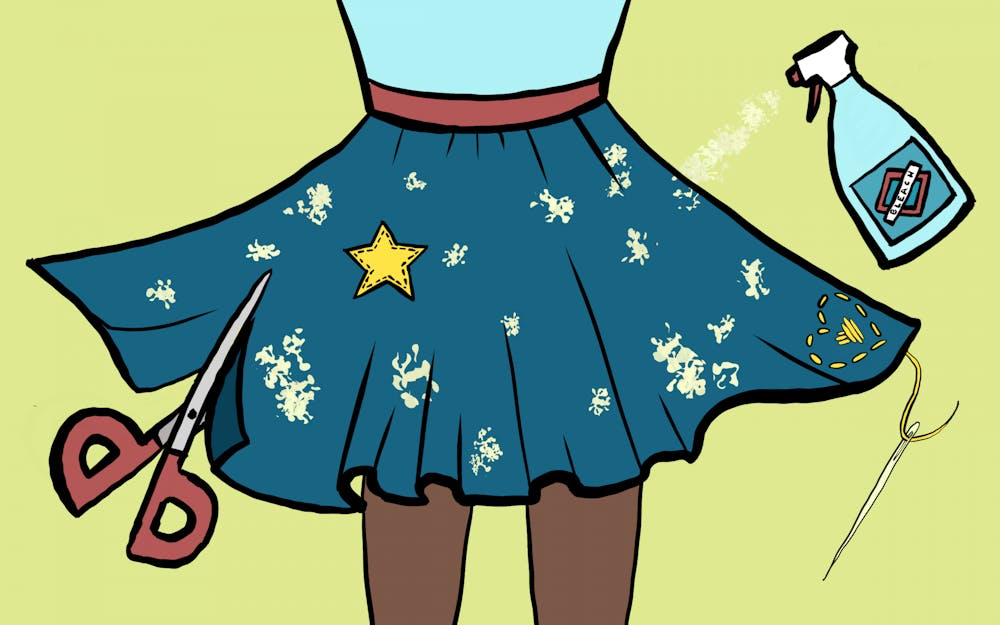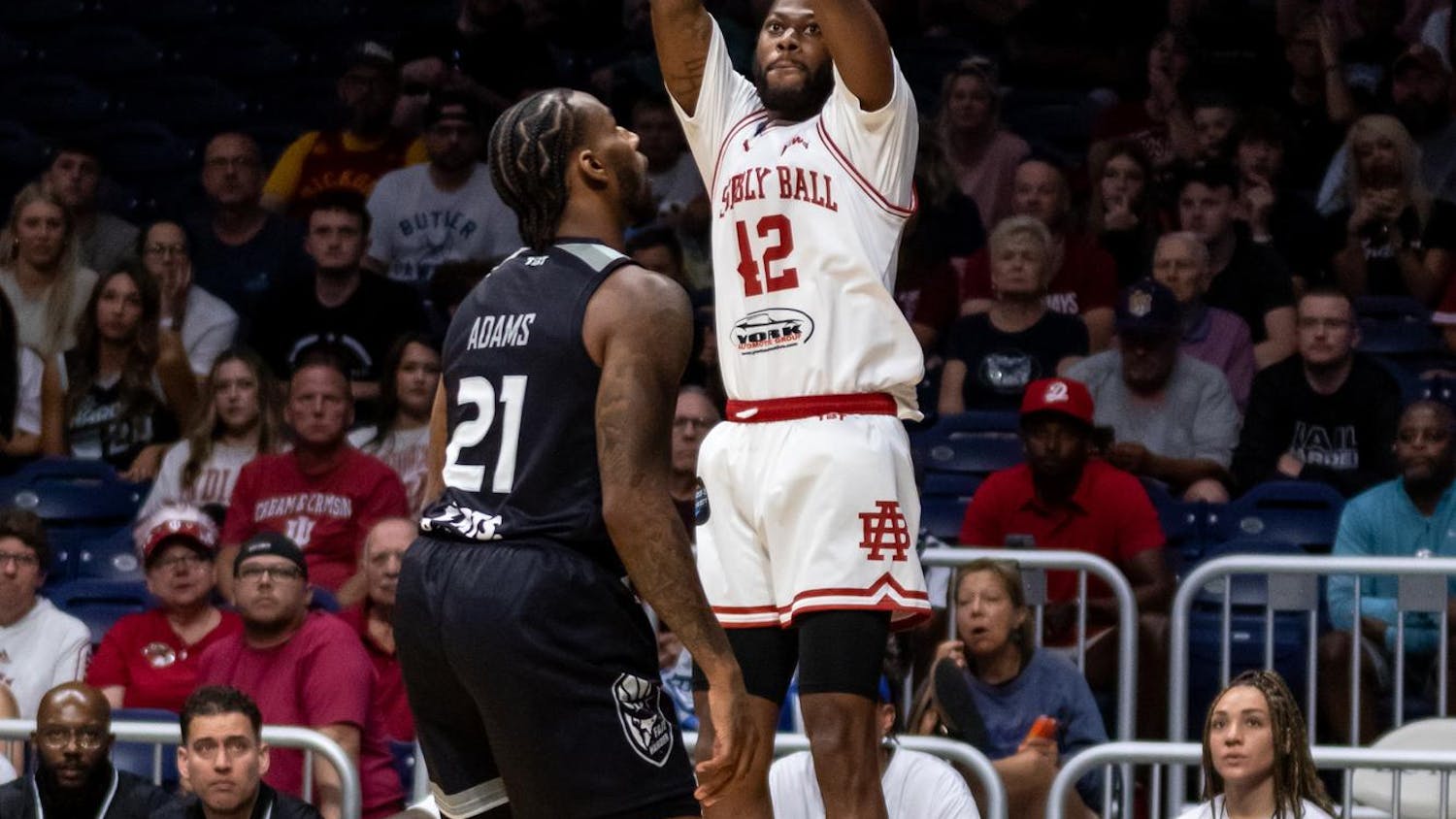Two weeks ago, I had a bad day and Goodwill tends to be my pick-me-up of choice: close, affordable and my favorite form of retail therapy. I got three incredible pieces. None of them fit.
Normally this would send me spiraling — it still did — resulting in me forcing my way into a too- tight wool dress I had to get my friend Greta to cut me out of. Just after the whole ordeal ended, Greta uttered some words of wisdom: Why don’t I make something else out of the scraps?
Upcycling, or the practice of turning something useless into something useful, is a time-honored tradition with no true origin. The practice gained popularity in wartime with campaigns like the United Kingdom’s “Make Do and Mend.” Classic films like “Gone With The Wind” and “Sound of Music” highlight this with their curtain clothing, as both films take place around major wars. The term “upcycling,” wasn’t coined until 1994 and fashionistas have created new terminology for the practice since then — “refashioning” — in the early 2010s.
Related: [COLUMN: ‘You’ season 4: coming full circle]
This sustainable fashion trend has become popular once again with the rise of environmental consciousness. Major brands have even joined in, from Urban Outfitter’s Urban Renewal Remade line to Pacsun selling GOAT Vintage pieces; unfortunately for the consumer, upcycled clothing can be incredibly expensive to buy from these brands. The easiest way to get into upcycling is to do it yourself.
As with any other fashion endeavor, there’s a steep learning curve for sewing. If I hadn’t learned how to sew as a kid — and spent countless hours in quarantine re-teaching myself — I wouldn’t be able to write this article. I was lucky enough to have the resources to teach myself, mostly thanks to YouTube and Pinterest’s extensive catalog of free information. That being said, upcycling is incredibly easier than having to create whole garments from scratch.
Related: [Food Truck Mondays to start April 3]
I’ve dealt with body image issues for my whole life. I never felt like I was skinny enough to be fashionable until I started rethinking how I buy clothes. Once I started getting into vintage fashion, my body issues got worse. My favorite eras of fashion were the 1950s, notorious for overprescribing medications to housewives, and the 1990s, best known for the ever-popular emaciated physique.
Of course, my brain liked some of the unhealthiest eras for women, skewing the sizes considerably. My modern large clothing sizes were translated into ‘90s 1X sizes and larger. I thought I could never find larger sizes at vintage stores, which in part is a grim reality. Plus-sized vintage clothes are horrifically hard to find — especially with resellers marking large sizes as “oversized.” Changes in sizing over the years exacerbates this issue. Brands prey on consumers by creating their own size measurements and assuming most people won’t check. I still don’t know what my size is. I could fit into a medium in one store easily and not be able to zip up an extra-large in the next.
Upcycling and altering my clothes have mostly fixed this issue for me; instead of throwing out the clothes I bought from Goodwill, I’ve spent the past two weeks altering the pieces to fit me. I turned the dress I had to cut off of my body into an adjustable tartan skirt, taking inspiration from the late Vivienne Westwood. I don’t have to worry about things I like fitting anymore. I’ll make the clothes fit me, not the other way around.






